I will need a volunteer to help me steer the boat, someone between the ages of 4 and 7.
While designers had long planned for Jungle Cruise to operate as an actual boat cruise, issues cropped up with this decision. For starters, the timing of the cruise had to remain constant. Any captain can tell you that no matter how calm the waters are on a given day, scheduling arrival and departure times is dicey at best. While California didn’t have the rainy concern that the next theme park location, Walt Disney World, would, it still was susceptible to the elements on occasion. In other words, actual untethered boat rides downstream could cause traffic issues.
In order to stave off such concerns, Disney Imagineers correctly determined that they needed to control the speed of the tramp steamer through the watery course. That meant putting each Jungle Cruise boat on rails. Because of this choice, boat captains would never control the path of their travels. They could, however, influence the speed of their vessels during the journey. This concession also frustrated Disney, who you’re probably beginning to appreciate was quite the control freak, with this behavior validated by his historic life achievements.
Once, while riding the Jungle Cruise attraction, Disney was horrified to realize that the entire trip was going too quickly. His intended ten-minute jungle experience only lasted four minutes. The guilty captain and the entire Jungle Cruise staff received re-training on how they should time their ride movements. This wasn’t a matter of Disney being too particular, either. Designers planned a lot of the animatronics for the jungle recreation based on when guests would ride by the various animals. If the timing wasn’t precise, the visual stories told during the journey wouldn’t make sense. This sort of attention to detail explains why Disneyland has stood the test of time.
Because of the tracks, there was one other necessary stipulation. The waters beneath the boats required coloring. Otherwise, Disneyland tourists would notice the underlying tracks and be taken out of their exotic jungle experience. If you’ve ever heard someone complain that the Jungle Cruise water is so nasty that it’s discolored, you can explain to them that the murky depths are intentional rather than a byproduct of haphazard cleaning practices. The latter explanation doesn’t sound like Disney anyway, does it? This choice to color the waters is what caused the mechanical issues with the animatronics mentioned above, which underscores the burdens of opening Disneyland. Every time park planners solved one issue, another presented itself.
That bamboo can grow to be six stories tall. People say it can grow to seven stories, but that's a whole other story.
Image: Disney
When Jungle Cruise launched in 1955, it was a serious story in tone. All the narration highlighted the perils of the trip, pointing out danger at literally every turn. Harper Goff’s backdrops on the ride were the Congo, the Nile, the Mekong, and the Amazon rivers. There was no hackneyed joking either visually or narratively. Since the original version of the attraction offered a tribute to the True Life Adventures documentaries, the dialogue was serious at first. It changed for a reason, and that reason impacted the entire theme park industry forever.
Walt Disney took tremendous pride in his creations, as demonstrated above. He was a tireless worker who was detail-oriented and obsessed with redefining his legacy. He operated under the assumption that he had cursed himself by peaking too soon. Since the release of Snow White and the Seven Dwarfs in 1937, every later project Disney created was compared to his first movie, the one that seemed impossible to match in terms of quality and storytelling. Through the art of animation, Disney proved in that film that they could show anything onscreen in a way that moved the viewer.
Critics of the day obsessed over the evolutionary rather than revolutionary Disney films in the wake of Snow White. Audio-animatronics, no matter how good they were, would again suffer against the lingering memory of Snow White. It's the problem with creating something almost perfect. It raises expectations too high for all future works. By the 1950s, Disney felt constant frustration that after decades of historic innovations, he was spending his later years “playing with his toys,” scale models of Disneyland concepts. He oftentimes worried that his life was regressing rather than advancing.
Of all the groups I've taken on this ride, you're the most...recent.
Image: Disney
Facing constant self-actualization pressure, Uncle Walt took all criticisms of his nascent theme park, real and perceived, as attacks on his credibility. During a random day at the park, he bristled when he overhead a conversation between mother and son. The little boy indicated that he wanted to ride on Jungle Cruise. His mother dismissed the idea out of hand, stated that they’d ridden it before. There was no point in going again. She might as well have slapped Uncle Walt in the face.
What Disney learned from this conversation was that his park patrons were fickle. If something wasn’t new and exciting, they would quickly lose interest in it. In this moment, he crystallized an idea for the future of all Disney theme parks. His philosophy became mythic. “Disneyland will never be completed. It will continue to grow as long as there is imagination left in the world.”
Walt Disney started his bold new vision with Jungle Cruise. By 1961, it had become something of a problem child for the park. Guests loved it, as demonstrated by its continued drawing power. The waterlogged animatronics broke down so much that he once joked to a reporter that he knew they worked only because he’d seen it on television. Rather than allow a struggling ride to operate indefinitely, Uncle Walt addressed the issue directly. He tasked one of his favored Imagineers with improving the ride experience.
Image: Disney
Marc Davis, one of the revered Disney’s Nine Old Men, earned the crucial gig. To fundamentally alter Jungle Cruise as a concept, Davis illustrated comedic ideas for the various animal scenes. Guests riding the tramp steamers would drive past these images such as four men cowering on a totem pole above a giant-horned rhinoceros. If you didn’t understand the “They’ll get the point. In the end.” joke above, that’s the visual explanation. The rhino has the point, and the proverbial low man on the totem pole is about to get it in the end. Davis meticulously researched the amount of time guests would spend at each sight gag. Then, he drew a scene that he believed they could enjoy in the given timeframe. Many of the original sketches Davis created still exist in some form today, including the pygmy canoes and the infamous Sleeping Zebra.
To accentuate the change in tone toward satirical humor, the verbiage in the narration also changed from formal documentary to playfully macabre. This seemingly innocent modification proved wildly divisive at the time. A vocal group of naysayers complained that the switch from serious boat adventure a la The African Queen to a silly romp reduced their enjoyment of the ride. Fifty years later, those complaints seem crazy to those of us indoctrinated into the sillier side of Disney attractions, but it was a major issue for Disney in the early 1960s.
For (arguably) the first time, Disney overhauled one of their most popular ticket sellers. Some guests revolted against the idea. Nowadays, the outrage goes the other way. People loudly complain if a ride grows outdated in tone. That’s because Walt Disney refused to rest on his laurels with Disneyland, even when it was just five years old. His dedication to keeping everything fresh redefined all of our expectations for what we should expect from theme parks.
We've laughed and we've cried. We've almost died! I love you all like family. Now get out! I'm sorry, that was rude. Please get out.
Image: Disney
The legacy of the Jungle Cruise is unmistakable. The unlikely combination of comically extreme jungle scenes and pun-intensive onboard narration has entertained millions of theme park guests over the past 60 years. Walt Disney himself created the ride and demanded its overhaul from seriously sinister to slyly slaphappy. Due to its popularity at Disneyland, Jungle Cruise was an automatic inclusion for Walt Disney World’s debut. It’s since received implementations at the Tokyo and Hong Kong resorts as well.
For years, Disney attempted to adapt a movie from the story concept. There was even a plan in place a few years ago for Woody and Buzz, Tim Allen and Tom Hanks, to star in a buddy movie version of Jungle Cruise. Recently, their plans changed when the company’s studio division confirmed that Dwayne Johnson, the top-grossing actor in the world, will star in an upcoming film version of Jungle Cruise. Presumably, it will offer all the over-the-top hijinks of the ride itself along with some of the daring adventure of the original inspiration for the Jungle Cruise, The African Queen. When it debuts, the movie will provide additional backstory to one of the tallest tales in the history of Disneyland.
What’s your favorite Jungle Cruise joke? Let us know in the comments below...
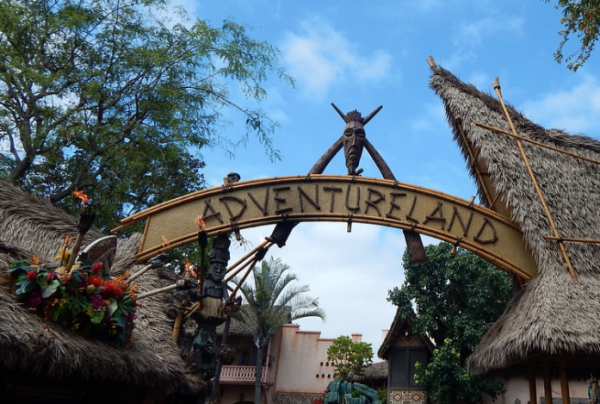
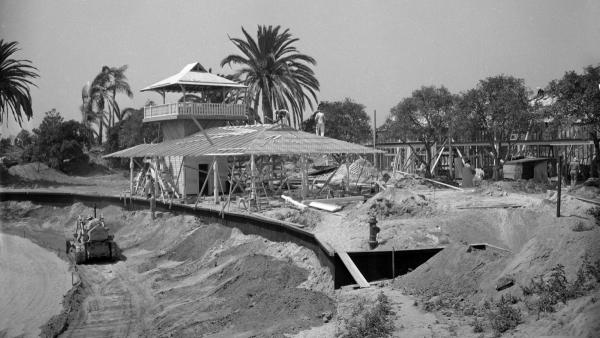
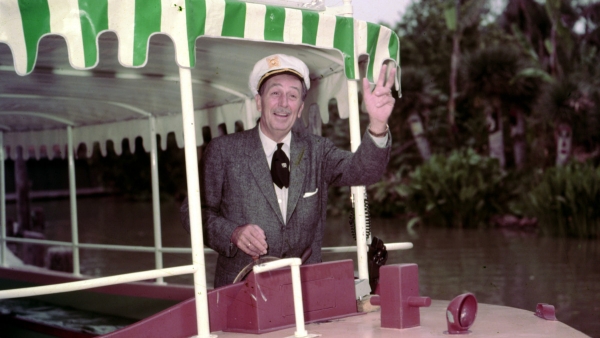
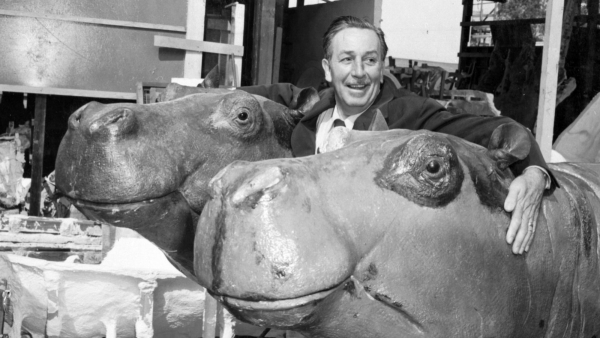
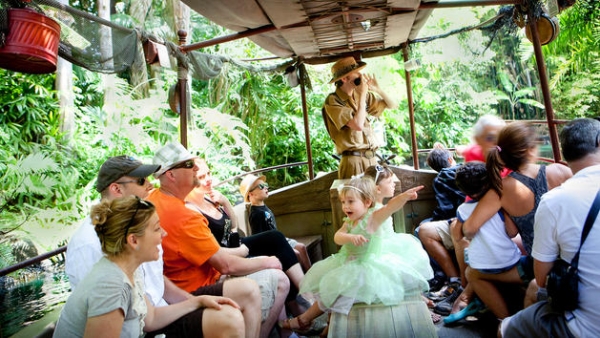

Comments
"Ladies and gentlemen as you exit the boat please watch your step. If you don't, please watch your head. And if you won't watch your head please watch your language."